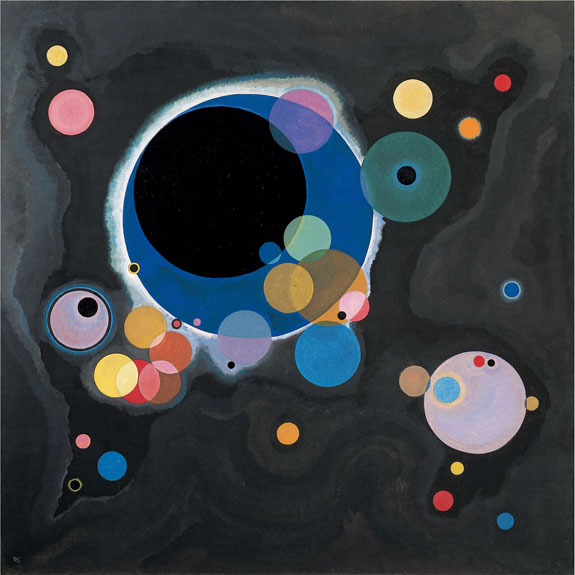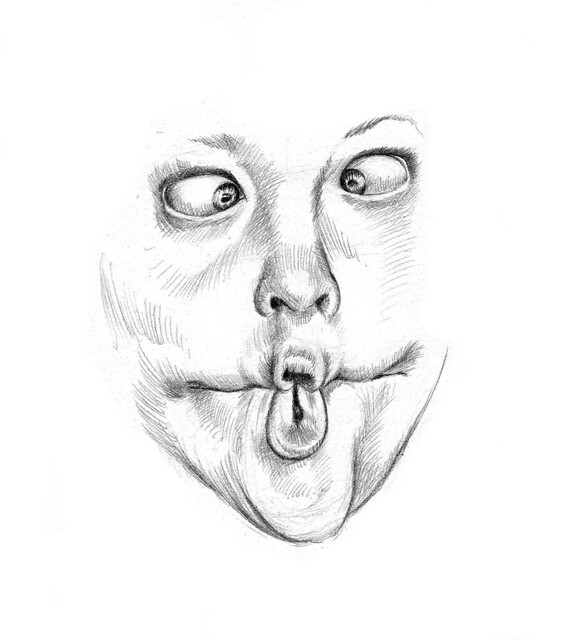Most of our identity is constructed from what we learn. In a sense, we're walking amalgams of bits and pieces in formation. The historical threads of written and interpreted thought pass through us while we keep only fragments. Our tacit paraphrase of these ideas weave together into unified, open-ended wholes. It's this shredded, textual characteristic of identity that my self-portrait attempts to represent.
Sunday, September 25, 2011
Retouching Self-Portrait
Compositing Big Ideas
This is an illustration of technology's potential to 'extend' our mind beyond its dermatological confines. Facilitated by technology we're able to communicate over great distances almost instantaneously. Moving images, and images that move, contain our collective memories projected on screens of various size and orientation. We are continually sharpening our intuitive use of these tools to phantasmically extend our primitive reach in the world.
Intertextuality
This is my example of Intertextuality in the form of a faux magazine cover for Dragon integration into society. As a 'layer of interpretation' in visual imagery, Intertextuality is the same idea represented in different forms in different contexts.
Dragons have had numerous representations throughout various time periods and civilizations as well as various media. For topicality, immigration seemed to loosely fit, but I tried to give it a humorous spin ;D
Saturday, September 24, 2011
Echolocation

Wassily Kandinsky, Several Circles (1926)
-This is an update to my previous studio exploration post-
Thinking further about the idea of place, and how sound contributes to it, I'm looking more into echolocation. Echolocation, as used by bats, reconstructs the closest objects first and foremost in the bats' navigation. As of now, scientists can't show that bats actually form a visual image of some sort in their mind from the auditory data they collect. In that case, it could be called a "cross-modal transfer". The information crosses from the auditory mode to the visual mode.
Brain Movies
By now this has been all over the tech blogs, but it is a pretty big deal. That is, if the implications of this technology pan out. The idea is that we can reconstruct the image of a person's mind. It would be inaccurate to somehow say the image is in a person's brain, but that's still the idea. The attempt is to visualize externally what a person is seeing while watching a movie.
Wednesday, September 21, 2011
Chorotopos
In, "Artistic Learning in Relation to Young Children’s Chorotopos: An In-Depth Approach to Early Childhood Visual Culture Education" Eli Trimis and Andri Savva explore the idea of space and the proximal idea of place for pre-primary learners.
Sunday, September 18, 2011
Photoshop Semiotics
What might appear to be a confusing article title turns out to be interesting idea. For the authors verbiage might be the flavor of the day in this piece, but from what I can gather, it attempts to describe how our understanding of the photographic image has changed since the advent of the computer age. In this case, the 'semiotics' part is not specifically about language, but what we interpret as symbols in in computer manipulated photographic images.
Saturday, September 17, 2011
You've got to be kidding
I spent a few hours yesterday attempting to implement a picture viewing feature on my blog. It wasn't anything particularly fancy, but when you clicked on an image it would have opened in the center of the screen with a semi-transparent black background. I've only got limited skill in web design, so I wasn't sure if I had everything working right. I changed this, that, and the other thing over and over and couldn't figure out what I was doing wrong, or even right for that matter.
Then, I just read today that blogger was busy implementing their own default picture viewer the same day I was trying to do mine!!! haha. Oh well. At least it explains why there were 2 picture viewers at one point. And it gave me a good opportunity to use that sketch I did a while ago :D
Thursday, September 15, 2011
The Extended Mind thesis
The cloud assignment big idea I'm choosing is derived fromThe Extended Mind thesisby David Chalmers and Andy Clark. In short, the idea is that technology is/becomes an extension of our minds, literally. Our mind in this view doesn't end with our brain. The technology is intimately connected to us and the way we think. They use the example of a smartphone, but imagine having to hammer a nail for instance. What we first think of is a hammer. It doesn't usually occur to us to punch the nail with our fists or to even get a rock. The hammer, even before we find a particular hammer, is already there in our thoughts. When using the hammer, it is directly an extension of the thought process required to insert the nail.
Another example might be how we've adopted not only the term, "Google" into our lexicon, but how when we attempt to remember something our first inclination is to find a computer and search for it. My muscle memory actually has my hands moving towards the keyboard position. Here we've fused an entirely new word with the phenomenon. When we're instructed to 'just google it' we're not only requested to use a particular tool, but a very specific part of that tool which we're expected to be closely associated with. This particular example even has some concerned to an extent similar to the fear of losing a limb.
Wednesday, September 14, 2011
Seeing in the dark
In,"Darkness sheds light on neural computations"scientists describe experiments to show how we might navigate in the dark. Bats on the other hand do this by projecting sounds out and depending on how fast those sounds are received are able to determine how far away objects are. It's called sonar, and it's how bats develop a sense of place. In thinking about our sense of place and how we determine it, it occured to me that we also use our hearing (although to a much lesser extent than bats). For instance, navigating in the dark or perhaps through the woods where we can only see so far. Many also use 'background' music to help them focus in their work and to even motivate students in the classroom.
Monday, September 12, 2011
Sweeny's Big Idea
Robert W. Sweeny had a big idea. (in the sense of Sydney R. Walker's big ideas). Part of that big idea was metaphorical. In this case, he borrowed some characterizations from William Gibson's novel, "Neuromancer": the cyborg, the clone, and the parasite. Not too long ago these fictional characters seemed rather far off, but we're seeing them closer and closer to reality. Sweeny viewed them as a critique on the, "connections between individuals, objects and institutions". Used in an artistic sense that very well may be the case. People however appear to have a much greater tolerance for adaptation to change. Transhumanism in particular has been gaining notoriety of late.
Saturday, September 10, 2011
Anatomy Lesson
Just a fun video that goes along with the theme of my website design here.
source: Anatomy Lesson by Chris Bilton- YouTube
Wednesday, September 7, 2011
NYC Skyline
Being on the precipice of the 9/11 ten year anniversary I'm sure we'll be hearing a lot about the New York City skyline. In my Technology in the Art Room class, my group happened to pick the skyline as an example of an iconic image and how it fits in with Walter Benjamin's theory of Aura. His description is somewhat ellusive, but many appear to take it as a form of 'authenticity'. That's hard to imagine considering experts go to great lengths to authenticate questionable works and authentication is often given in the form of a written document for a particular work.
A better analogue for the idea of aura might be 'presence'. The point being that the presence of a particular artwork is lost in the reproduction of that work. Eitherway, the New Yorker Magazine recently featured an artist specifically for his illustrations of the NYC skyline. They discuss in part how the loss of the twin towers affects his work. Could it be said the skyline lost some of its aura with the change?
Reflections on ARE 190 classwork
In class we worked on making a 'topic web' from the readings we each had the previous week. (I'm not sure of the actual term for it, but there were topics written on a large sheet of paper and we connected observations from the readings to those tops visually). Something like this with different topics of course...
Anyway, mine and another person's papers focused on globalization and the necessity of making students aware of it. Unfortunately, we didn't get a chance to really talk in any depth about the other readings my group had. They largely focused on interdisciplinary approaches to art teaching, and further integration of art into teaching programs.
Monday, September 5, 2011
Some of my work
That's just an overall view of some of my workspace. I think the zoomed out view and the context it affords is a statement about my work in general. Despite its various styles and levels of attention, most of my work has a distinct 'lived in' quality I think. By which I mean, an apparent chaos concealing an underlying order borne out with time.













